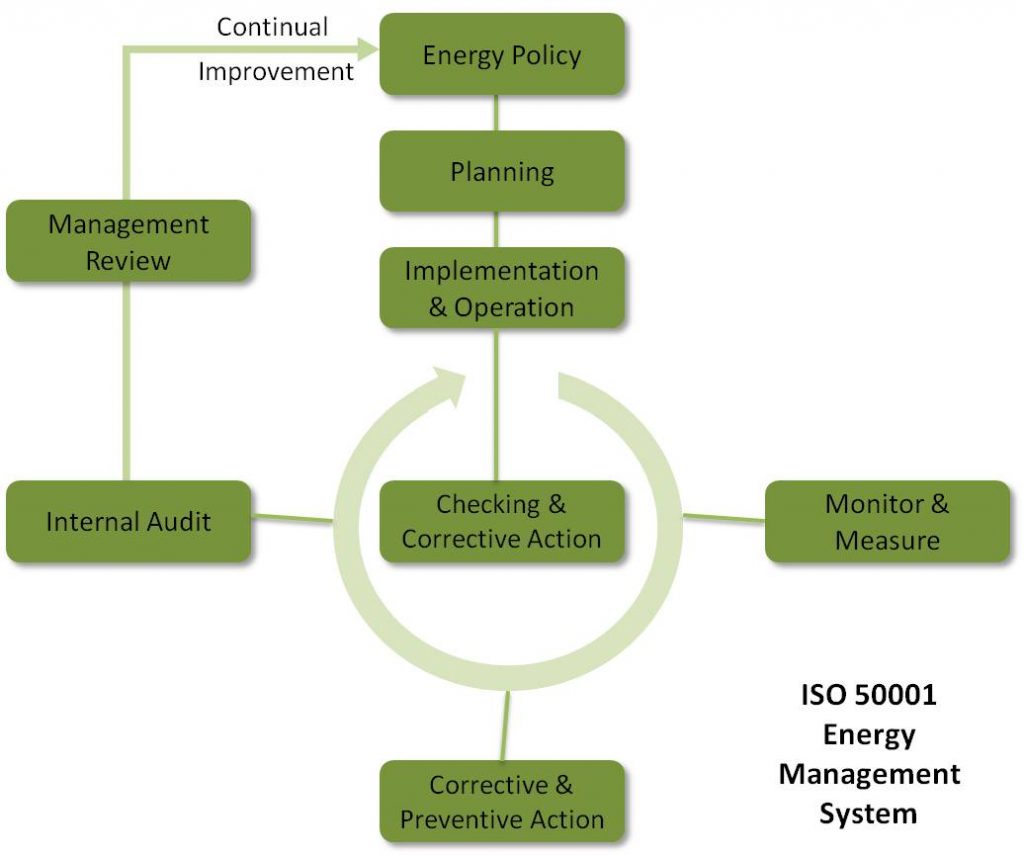Mind the Gap – are you Ready for ISO 50001?
 We know that energy efficiency is good for your business – save energy, save money.
We know that energy efficiency is good for your business – save energy, save money.
If you want to have a deeper focus on energy, why not expand your existing ISO 14001 Environmental Management System and get ISO 50001?
What is ISO 50001?
With their soaring energy costs, I see that more and more companies are interested in Energy Management Systems (EnMS).
The system helps them understand and manage energy consumption and budgets, in a formalised way. It can then be certified to the international standard ISO 50001.
But why start from scratch? It’s much easier to build upon an existing management system.
All significant management systems standards follow the same ‘high level structure’ so that the core framework for each is the same. This makes it more straight-forward to expand existing systems (e.g. ISO 14001 Environmental Management System or ISO 9001 Quality) to incorporate energy and the requirements of ISO 50001.
The cyclic process of the ISO 50001 EnMS leads to continuous improvement. Here are the key steps involved.
ISO 50001 Gap Analysis
How do you know that you’re ready to go forward? Get an ISO 50001 Gap Analysis.
I’ve been asked to look at companies’ existing systems and current energy management practices, so they know what their next steps should be in developing a successful ISO 50001 EnMS.
My Gap Analysis covers all the clauses of the ISO 50001 standard (e.g. policy, planning, Energy Baseline, Operations, including design and procurement, audits and Management Review). In addition, it considers whether all elements of the significant energy consumption are covered – as required by ESOS.
To show the results clearly, for each clause or item, the Gap Analysis report gives a RAG rating and recommendations for next steps.
As always, my approach is to make the whole process useful and trouble-free, so you can plan your project for achieving ISO 50001.
Top Tips – What to Look Out For
Are there any trends to be aware of? The key points I tend to notice are:
The Energy Baseline has not been done properly – there are missing activities, the data is questionable or the calculations are wrong.
It doesn’t cover all of the key energies – in buildings, processes and, particularly, transport. It’s OK to focus on the big ones to get the best reductions, but you’ve got to at least acknowledge the existence of the small ones too.
Because the EnMS is often lead by the Energy or Facilities Manager, it is common to ignore or forget transport-related energy. Engage with other departments to ensure transport is included – this may be finance department who collate the mileage data, HR who arrange company cars or the fleet manager.
There are incomplete or inadequate energy objectives or performance indicators.
Energy is not considered in the procurement process.
If the Management System has no environmental basis (e.g. just covers quality), then it is more of a challenge to properly put in energy. Better to start with an EMS or a combined EMS / QMS (although it’s not impossible).
ISO 50001 and ESOS
A certified ISO 50001-certified EnMS is one route to compliance under the Energy Savings Opportunity Scheme ESOS. Large companies must conduct energy audits and report compliance to the regulator (large companies are >£44m turnover or >250 staff).
We are now in Phase 3 of ESOS, with the final deadline for compliance being 5th December 2023. This sounds a long way off – so the sooner you start on your ESOS work, the better.
Put in your EnMS now – your ISO 50001 certificate needs to be valid at the compliance deadline. Doing it now, means you’ll identify energy and cost savings now, bringing further financial benefits.
Interested in an ISO 50001 Gap Analysis? Call me now!


